Shakila Sarkar, Lecturer, Anandapur Degree College, Comilla
Bangladesh stands at a pivotal juncture in its history. Once seen as a country overwhelmed by poverty and natural disasters, it has emerged in recent decades as one of the world’s most surprising development success stories. With impressive strides in health, education, economic growth, and digital innovation, Bangladesh is no longer defined by it
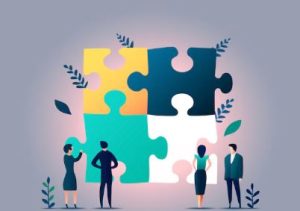
s challenges, but by its potential. At the heart of this transformation lies its people—especially its youth. Empowering the next generation is not merely a moral obligation or a developmental necessity; it is the key to unlocking a sustainable, prosperous, and inclusive future.
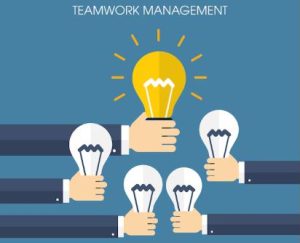
With over 45% of its population under the age of 25, Bangladesh is experiencing a “youth bulge.” If properly harnessed, this demographic dividend could accelerate growth, reduce poverty, and place Bangladesh among the ranks of high-income nations by the middle of the century. But to realize this vision, the country must invest in its young people—providing them with education, skills, values, and opportunities to lead. This article explores the vital role of youth empowerment in shaping Bangladesh’s future and outlines strategic priorities to build a generation ready to lead.
Demographic Dividend: A Window of Opportunity
Bangladesh’s youth population is both a blessing and a challenge. A young, dynamic labor force has the potential to drive innovation, productivity, and social change. However, this potential will only be realized if young people are given the right tools and environments to thrive. If left uneducated, unskilled, or unemployed, this youth bulge could lead to rising inequality, frustration, and instability.
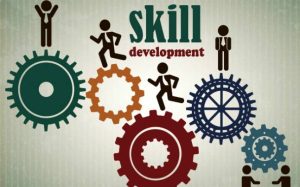
Countries like South Korea and Vietnam have shown how strategic investments in youth can turn demographic trends into engines of growth. Bangladesh has made some progress—literacy rates have improved, school enrollment has increased, and digital access has expanded—but gaps remain. Structural inequalities, gender disparities, rural-urban divides, and outdated education systems continue to hinder youth empowerment. Addressing these issues is not just desirable; it is urgent.
Education: Beyond Literacy Toward Lifelong Learning
Empowering a generation begins with education. While Bangladesh has made commendable progress in achieving near-universal enrollment at the primary level, challenges persist at secondary and tertiary levels. Moreover, the quality of education remains a major concern. Rote learning, outdated curricula, and teacher shortages mean that many young people leave school without the skills needed for the modern economy.
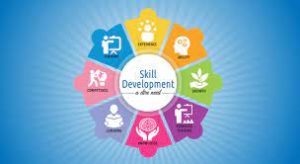
To build a future-ready generation, Bangladesh must rethink education. This involves:
- Curriculum reform to integrate critical thinking, creativity, digital literacy, and civic responsibility.
- Teacher training and support, especially in rural and underserved areas.
- Inclusion of marginalized groups, including girls, children with disabilities, and indigenous communities.
- Technical and vocational education and training (TVET) programs aligned with labor market demands.
- Higher education innovation, linking universities with industries, research, and entrepreneurship.
Education must not stop at formal institutions. Lifelong learning through community centers, online platforms, and workplace training should be promoted to keep pace with the changing world.
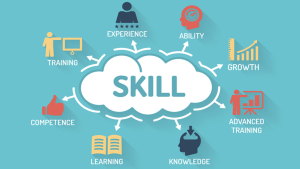
Skills for the Future: Bridging the Gap Between Education and Employment
In today’s rapidly evolving economy, the skills of yesterday are no longer sufficient. Automation, digital transformation, and globalization are reshaping job markets. In Bangladesh, millions of young people enter the labor force each year, but many remain underemployed or in informal, low-paying jobs.
To empower youth economically, Bangladesh must focus on future-oriented skills development. This includes:
- Digital skills: From basic computer literacy to advanced coding, AI, and cybersecurity.
- Entrepreneurial skills: Fostering innovation, risk-taking, and business acumen.
- Soft skills: Communication, teamwork, emotional intelligence, and adaptability.
- Green skills: As climate change becomes more pressing, skills in sustainable agriculture, renewable energy, and disaster risk reduction will be vital.
Public-private partnerships can play a crucial role in aligning training programs with industry needs. Platforms like a National Skills Portal could connect youth with training, internships, and mentorship opportunities across the country.
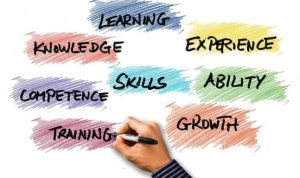
Youth Entrepreneurship: Unleashing Innovation
Bangladeshi youth are not just job seekers; they are job creators. Across the country, young entrepreneurs are launching start-ups, creating social enterprises, and solving local problems through innovation. From e-commerce to fintech, agri-tech to health tech, youth-led ventures are reshaping the economic landscape.
To scale this potential, Bangladesh needs to nurture an ecosystem that supports youth entrepreneurship:
- Access to finance: Micro-loans, grants, and venture capital for start-ups.
- Incubation centers and accelerators: Providing mentorship, co-working spaces, and networking opportunities.
- Regulatory support: Simplifying business registration, taxation, and compliance processes.
- Entrepreneurship education: Integrating business and innovation training in schools and universities.
Government initiatives like Startup Bangladesh and private sector platforms such as GP Accelerator are promising examples. But to truly empower youth entrepreneurship, these programs must be expanded, decentralized, and made more inclusive.
Civic Engagement: Building a Generation of Leaders
Empowerment is not just about jobs and income; it’s about voice, agency, and responsibility. An empowered generation must be equipped not only to earn a living but to shape the society they live in. Youth participation in civic life—through volunteering, advocacy, and leadership—is crucial for building democratic resilience and social cohesion.
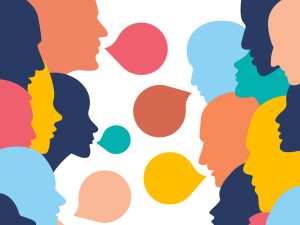
In Bangladesh, young people have a proud history of activism—from the Language Movement to recent climate protests and digital rights campaigns. To build on this legacy, institutions must create more structured avenues for youth engagement:
- Youth councils and parliaments at local and national levels.
- School and university clubs focused on civic education, rights, and responsibilities.
- Support for youth-led NGOs, social movements, and community initiatives.
- Digital platforms for policy dialogue and social innovation.
When youth are included in decision-making, policies become more responsive, inclusive, and future-focused. Engaging young people in governance is not a risk—it is a necessity.
Gender Equality: Empowering All Youth
No vision for youth empowerment can succeed without gender equality. Girls and young women in Bangladesh continue to face structural barriers—early marriage, gender-based violence, unequal access to education and employment. Empowering all youth means addressing these disparities head-on.

Policies must promote:
- Access to quality education for girls, including STEM fields.
- Legal protection and enforcement against child marriage and harassment.
- Women-friendly workplaces with maternity support, safety, and equal pay.
- Support for women entrepreneurs, including special financing and mentorship programs.
Additionally, changing mindsets through gender-sensitive curricula, media campaigns, and community dialogue is essential. Empowering women empowers entire families, communities, and economies.
Climate Resilience: Youth at the Frontlines
As one of the country’s most vulnerable to climate change, Bangladesh’s future depends on how it adapts and builds resilience. Young people will bear the brunt of environmental degradation, rising sea levels, and natural disasters—but they are also the best hope for sustainable solutions.
Youth must be central to the climate agenda. This includes:
- Climate education in schools and universities.
- Youth-led environmental projects, from tree-planting to clean energy.
- Inclusion in policy-making, such as national climate strategies and international forums.
- Green jobs and entrepreneurship, creating livelihoods that protect the planet.
Bangladesh’s youth have already shown remarkable leadership—from youth climate strikes to community adaptation projects in the Sundarbans. Scaling and supporting this leadership can make Bangladesh a global model for climate-resilient development.

Digital Inclusion: A Connected Generation
The digital revolution offers unprecedented opportunities for youth empowerment. Bangladesh’s digital transformation—driven by mobile connectivity, digital government services, and a growing tech ecosystem—can be a game-changer for education, jobs, and civic engagement.
But digital inclusion must be equitable. Many rural and low-income youth still lack reliable internet access, devices, and digital literacy. Bridging the digital divide is essential to empower all youth, not just a privileged few.
Policies should prioritize:
- Affordable internet and devices for students and youth.
- Digital literacy campaigns, especially in rural and marginalized areas.
- Online safety and cyber security awareness.
- Digital platforms for youth services, including education, health, and employment.
If done right, digital inclusion can democratize opportunity, unleash creativity, and connect Bangladeshi youth to the global stage.
Policy and Governance: Creating an Enabling Environment
Empowering a generation is not the task of one ministry or organization—it requires a whole-of-society and whole-of-government approach. Youth development must be mainstreamed into national planning, budgeting, and monitoring. This includes:
- A national youth strategy that is inclusive, data-driven, and action-oriented.
- Youth representation in planning commissions, advisory boards, and government councils.
- Public-private collaboration for education, skills, and employment.
- Monitoring and accountability mechanisms, including youth scorecards and annual reviews.
Moreover, development partners, civil society, and the private sector must align efforts to avoid duplication and maximize impact. Youth must not be treated as beneficiaries—but as partners in design, implementation, and evaluation.
Conclusion: A Call to Action
Bangladesh’s journey from a war-torn nation to a rising economic power is a testament to the resilience and spirit of its people. Now, as the country prepares to graduate from Least Developed Country (LDC) status and navigate a complex global landscape, the next chapter must be written by its youth.

Empowering a generation means more than just providing education or jobs—it means investing in people’s full potential, rights, and dignity. It means building institutions that listen, systems that include, and cultures that trust the youth to lead.
The future of Bangladesh is not a distant dream—it is being shaped today in classrooms, workshops, start-up hubs, and community centers. It is being written by millions of young people with ambition, creativity, and courage.
If we empower this generation with the right tools, values, and opportunities, they will not only build Bangladesh’s future—they will transform it.
ASIAN STATE INTERNATIONAL JOURNAL

